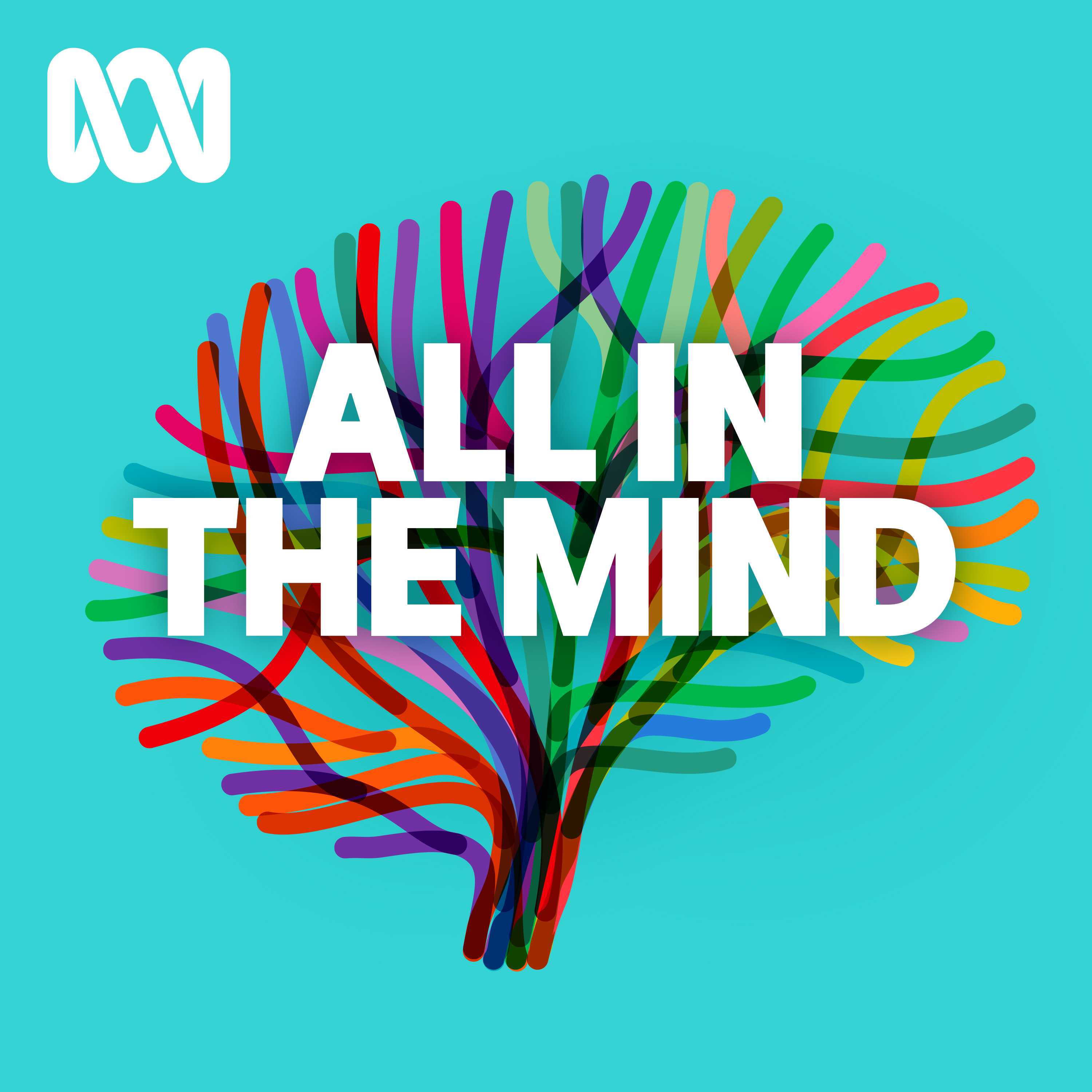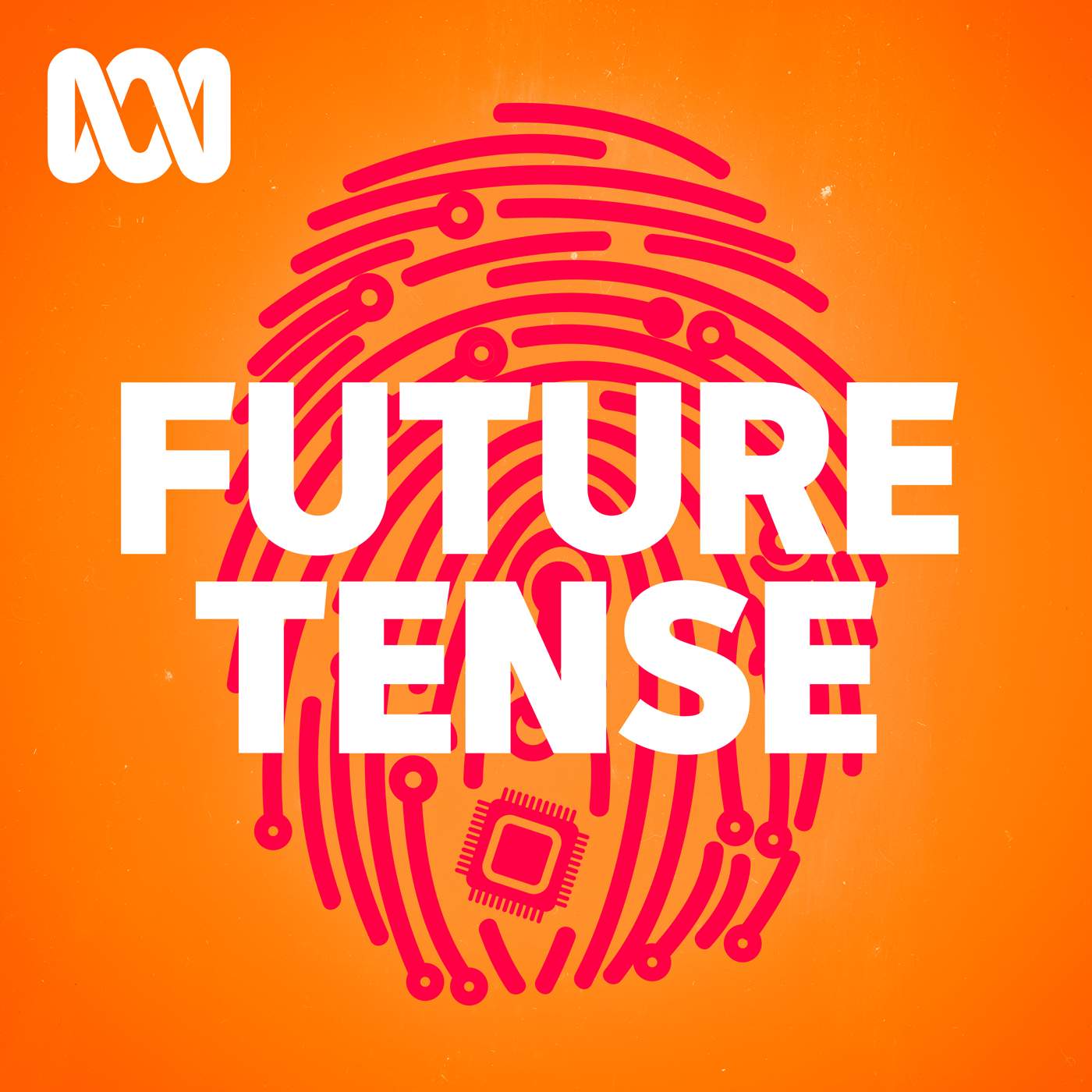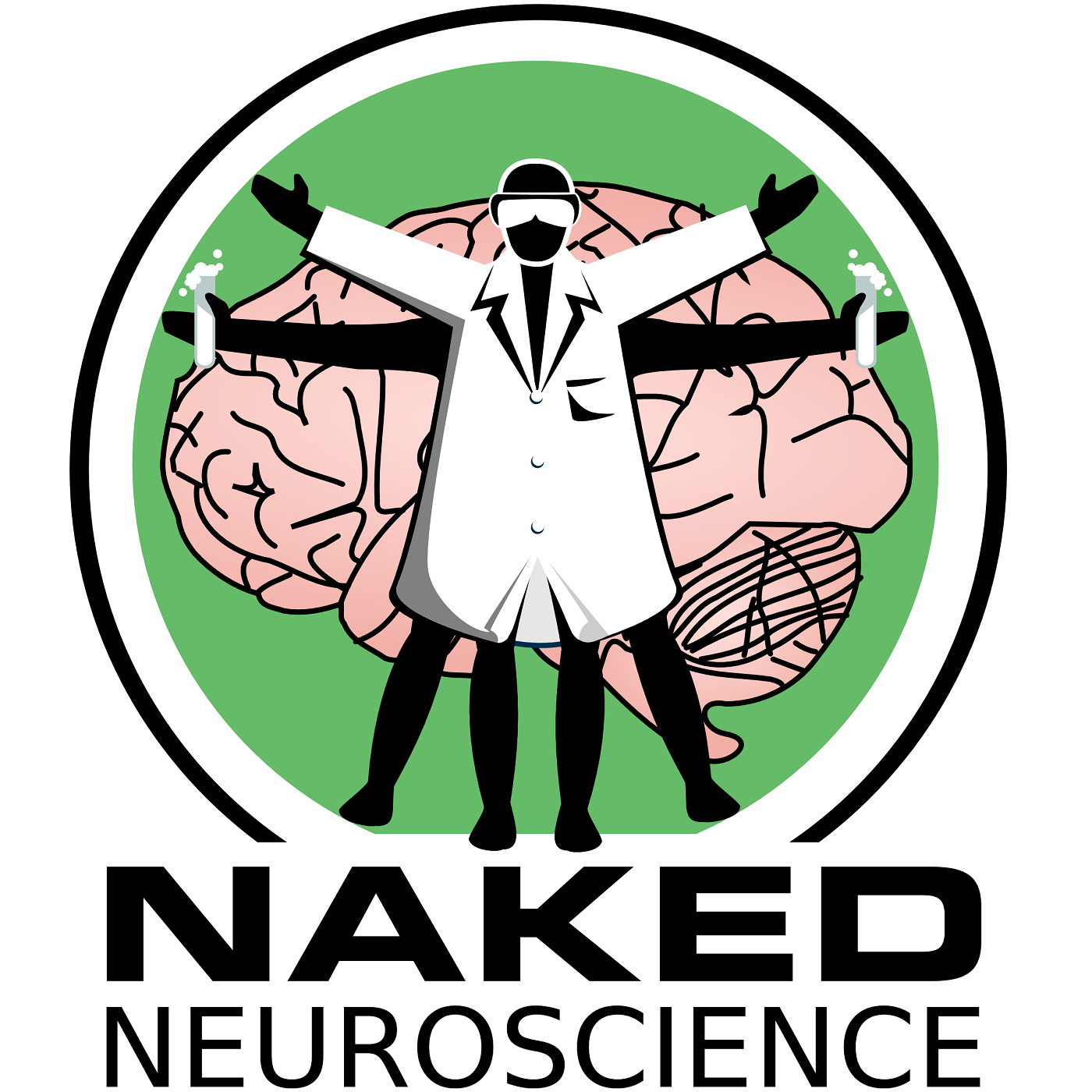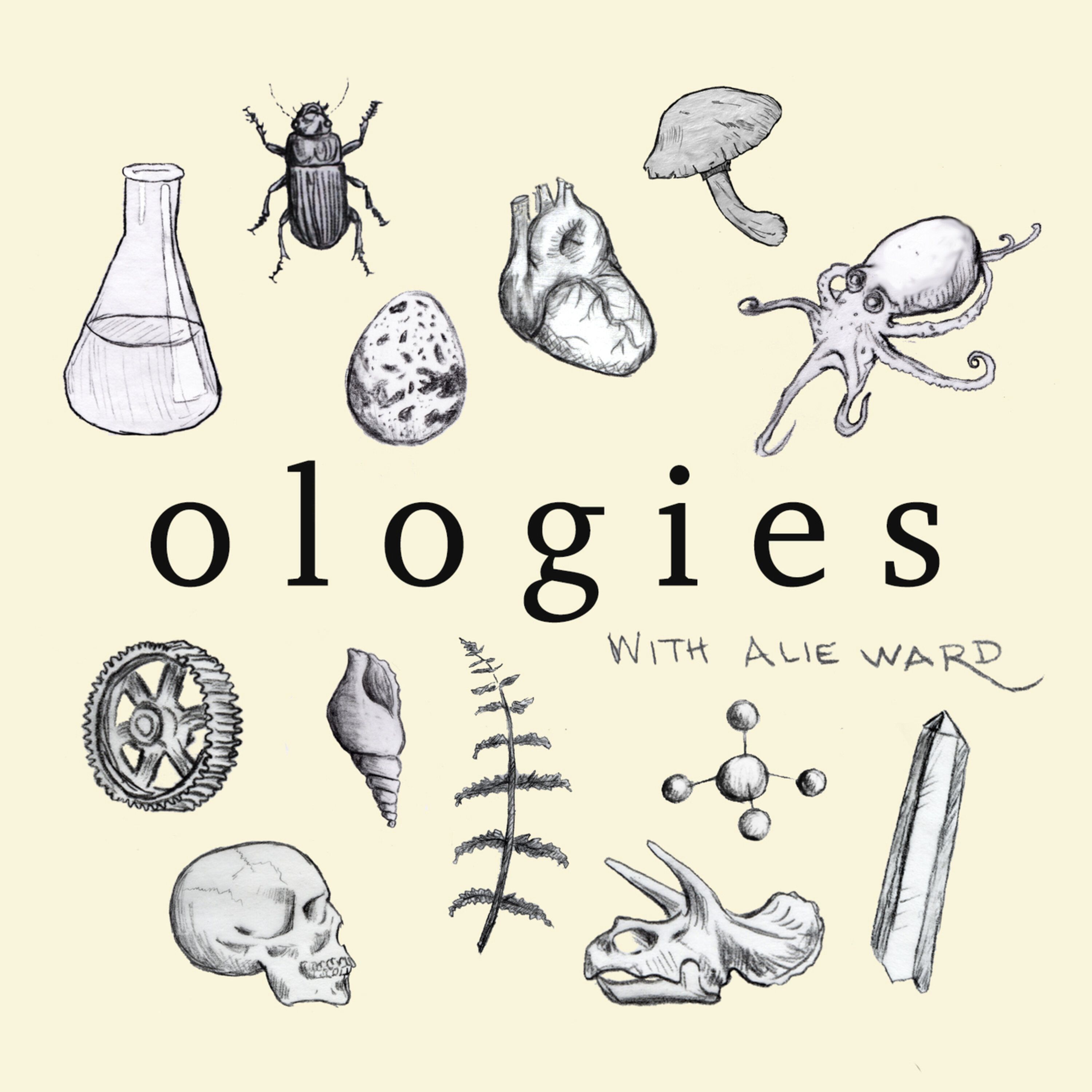
Heliox: Where Evidence Meets Empathy 🇨🇦
Join our hosts as they break down complex data into understandable insights, providing you with the knowledge to navigate our rapidly changing world. Tune in for a thoughtful, evidence-based discussion that bridges expert analysis with real-world implications, an SCZoomers Podcast
Independent, moderated, timely, deep, gentle, clinical, global, and community conversations about things that matter. Breathe Easy, we go deep and lightly surface the big ideas.
Curated, independent, moderated, timely, deep, gentle, evidenced-based, clinical & community information regarding COVID-19. Since 2017, it has focused on Covid since Feb 2020, with Multiple Stores per day, hence a sizeable searchable base of stories to date. More than 4000 stories on COVID-19 alone. Hundreds of stories on Climate Change.
Zoomers of the Sunshine Coast is a news organization with the advantages of deeply rooted connections within our local community, combined with a provincial, national and global following and exposure. In written form, audio, and video, we provide evidence-based and referenced stories interspersed with curated commentary, satire and humour. We reference where our stories come from and who wrote, published, and even inspired them. Using a social media platform means we have a much higher degree of interaction with our readers than conventional media and provides a significant amplification effect, positively. We expect the same courtesy of other media referencing our stories.
Heliox: Where Evidence Meets Empathy 🇨🇦
The Invisible Pandemic: What Science Is Finally Admitting About (Long) COVID
They told us it would be over in two weeks.
They told us that once you recover, you're fine.
They were wrong about all of it.
Three years into this pandemic, we're finally getting clarity on what COVID actually does to our bodies long-term. The evidence is overwhelming, disturbing, and deliberately downplayed by those who want us to "move on" without addressing the slow-motion public health disaster unfolding around us.
I've spent the last week poring over the Nature Reviews Immunology article that forms the basis of a recent scientific deep dive podcast on long COVID. What I found should terrify anyone still clinging to the fantasy that this virus is "mild" or "endemic" or "just something we need to live with."
Let's be clear: At minimum, 10% of everyone who gets COVID—regardless of vaccination status, severity of initial infection, or personal health—develops some form of long COVID. The real number is likely higher.
That's not a small problem. That's a society-altering catastrophe. continue reading the article
This is Heliox: Where Evidence Meets Empathy
Independent, moderated, timely, deep, gentle, clinical, global, and community conversations about things that matter. Breathe Easy, we go deep and lightly surface the big ideas.
Thanks for listening today!
Four recurring narratives underlie every episode: boundary dissolution, adaptive complexity, embodied knowledge, and quantum-like uncertainty. These aren’t just philosophical musings but frameworks for understanding our modern world.
We hope you continue exploring our other podcasts, responding to the content, and checking out our related articles on the Heliox Podcast on Substack.
About SCZoomers:
https://www.facebook.com/groups/1632045180447285
https://x.com/SCZoomers
https://mstdn.ca/@SCZoomers
https://bsky.app/profile/safety.bsky.app
Spoken word, short and sweet, with rhythm and a catchy beat.
http://tinyurl.com/stonefolksongs
Curated, independent, moderated, timely, deep, gentle, evidenced-based, clinical & community information regarding COVID-19. Since 2017, it has focused on Covid since Feb 2020, with Multiple Stores per day, hence a large searchable base of stories to date. More than 4000 stories on COVID-19 alone. Hundreds of stories on Climate Change.
Zoomers of the Sunshine Coast is a news organization with the advantages of deeply rooted connections within our local community, combined with a provincial, national and global following and exposure. In written form, audio, and video, we provide evidence-based and referenced stories interspersed with curated commentary, satire and humour. We reference where our stories come from and who wrote, published, and even inspired them. Using a social media platform means we have a much higher degree of interaction with our readers than conventional media and provides a significant amplification effect, positively. We expect the same courtesy of other media referencing our stories.
This is Heliox, where evidence meets empathy. Independent, moderated, timely, deep, gentle, clinical, global, and community conversations about things that matter. Breathe easy. We go deep and lightly surface the big ideas. Welcome to the Deep Dive. Today we're plunging into long COVID. Now, you, our listener, have pointed us towards some really dense but fascinating research on the immunology behind this condition. It's clear this is, well, a moving target, isn't it? Scientists are still actively trying to piece it all together. Absolutely. And that's precisely why looking closely at the immunology is so crucial. You know, while everyone's experience with long COVID is unique, understanding what's happening at a biological level, it can really shed a lot of light on this very complex issue. So our mission in this deep dive is to basically pull out the key immunological insights from a really comprehensive review article. This one's from Nature Reviews Immunology, which is, you know, a top tier scientific journal. Right. We want to cut through some of the complexity and get to the core understandings about what immunological factors are, well, likely driving long COVID. Think of this as us trying to build a clearer picture of the biological mechanism. Yeah, a clearer biological picture is definitely the goal. Okay, let's untack this then. When we talk about long COVID, what are we actually referring to? Well, long COVID, it's a term that really came from patient communities to describe symptoms that just persist after a SARS-CoV-2 infection. And it's really important to get this. It can happen whether the initial illness was mild, asymptomatic, or, you know, really severe. It's not just a consequence of having had a bad case of COVID-19. And the scale of this. Yeah. It sounds pretty significant globally. Oh, yeah. Current estimates suggest at least 10% of people who've had COVID-19 worldwide have gone on to experience long COVID. Wow, 10%. It's a massive number. Think about the implications for, well, individuals, obviously, but also healthcare systems. It's profound. 10%. Yeah, that really puts things into perspective. And the range of symptoms people experience, it's just so incredibly wide ranging. It truly is. The review, it highlights this constantly evolving extensive list of symptoms affecting multiple organs, multiple systems really throughout the body. Like what specifically? Well, we're talking persistent fatigue, the kind that can be really debilitating. Shortness of breath, a whole variety of neurocognitive issues often lumped together as brain fog. Yeah, brain fog comes up so often. Exactly. Problems with memory, concentration, executive function. And then there's dysautonomia. That's a malfunction of the autonomic nervous system, the part that controls all the involuntary stuff like heart rate, breathing. And it's not consistent either, is it? I read it can kind of come and go. That's another really challenging part. These symptoms can fluctuate. You might have periods where you feel a bit better, followed by relapses. And it can affect different parts of the body seemingly unpredictably. So definitely not just one or two lingering issues. And I remember seeing something about actual physical changes being observed in some patients, like on scans. Yes, exactly. Radiological abnormalities have been seen in various organs. The olfactory bulb, which is involved in smell, different brain areas, the heart, the lungs. And there's also evidence pointing towards microclots, tiny little blood clots in various places in the body. That suggests potential issues with blood vessels and clotting. Croclots. Yeah, that sounds like something that could cause problems all over. And you mentioned there isn't a clear diagnostic test yet for long COVID. That's right. And even the definition itself is still kind of being debated in the medical and scientific communities. Really? How so? Well, you'll see different criteria used, like are symptoms persisting for at least four weeks or is it 12 weeks after the initial infection? The WHO and the UK's NICE-E have put forward definitions. The review mentions those in Box 1 trying to find some common ground. But without a definitive diagnostic test, it makes clinical diagnosis and also research studies much more challenging. Right, yeah, trying to study something when you can't even clearly identify who has it. That makes sense that the prevalence numbers we see would vary quite a bit then. Exactly. That's what Box 2 and the review highlights. This variability in reported prevalence, it mostly comes down to these differences in definitions. and also the methods used in different studies. So what kind of range are we talking? Well, some studies report frequencies below 10%. Others go as high as maybe 60%. Wow. That's a huge difference. It is. For example, the COVID and Scotland study, it found that even 18 months after infection, 6% of people reported no recovery at all. And a pretty significant 42% fell only partially recovered. 18 months. Yeah. And then a big meta-analysis, looking at lots of studies together, estimated about 45% of people had persistent symptoms at four months. And that was regardless of whether they were hospitalized initially. Those numbers really are all over the place, aren't they? It highlights how complex this is. They do. And they really underscore the challenge in understanding the true scope. Data from the UK's Office for National Statistics also offers insight. They found a substantial 24% of their national caseload reported persistent symptoms for over two years. So, yeah, while some people do recover over time, it's clear a significant chunk of the population is dealing with long-term health issues. It really paints a picture of the lasting impact this virus can have. Now, you touched on the huge array of symptoms. Are there any patterns or are some symptoms just more common than others? The review really emphasizes the multi-organ, multi-system nature. It's broad. But a 2021 systematic review did identify some of the most commonly reported ones. Okay, like what? Weakness was high, about 41%. General malaise, feeling unwell, that was 33%. Fatigue, 31%. Impaired concentration, 26%. And breathlessness, 25%. So yes, while the list is huge, some symptoms do seem to pop up more frequently. It's interesting how many of those fatigue, brain fog, they overlap with other conditions we've heard about. The review mentions long SARS and MCFS, right? Yes, definitely. Box 3 in the review specifically talks about that overlap with other post-acute infection syndromes. like long SARS after the first SARS virus, SARS-CoV-1, and also myalgic encephalomyelitis chronic fatigue syndrome, or ME-CFS. And the overlap is significant. It really is. Symptom overlap includes that awful post-exertional fatigue where even minor activity causes a huge prolonged crash. Right, PEM. Exactly, PEM. Also the neurocognitive issues, dysautonomia, and POTS, postural orthostatic tachycardia syndrome. And interestingly, the review points out research has found common hub proteins, things like IL-6 and IL-1. These are immune signaling molecules that are elevated in both long COVID and MCFS. There's even a shared finding of reduced levels of a beneficial gut bacterium called Fecalibacterium prosnitzi. That's a really striking connection, these shared biological pathways with other established conditions. Does that give us any clues about what might be going on in long COVID? Absolutely. It provides really valuable insights, potential avenues for research. Given that ME-CFS has been studied for decades, although, you know, often under-resourced, the knowledge from ME-CFS research could definitely inform how we approach long COVID. The review even suggests that maybe the increased attention and funding for long COVID research could, in turn, boost research into ME-CFS. Like solving one puzzle might help with the other. Exactly. Kind of like two interconnected mysteries. Now, with such a wide array of symptoms and so much individual variation, are scientists trying to find ways to, like, categorize long COVID patients, group them somehow? Yes. The sheer diversity has prompted efforts to stratify patients, put them into specific symptom clusters. The thinking is that this could be really helpful for tailoring treatments, making management more targeted. Makes sense. But there's also a valid argument that maybe these clusters oversimplify things because the condition can be quite dynamic. Someone's dominant symptoms might change over time. Right. The review mentions a Delphi process that's a way to get expert consensus, which identified a core list of 11 outcomes that should be considered in long COVID research. Many studies now focus on a more refined list of common symptoms, PEM, fatigue, muscle pain, breathlessness, chest pain, cognitive dysfunction, just trying to find some common ground in all the complexity. Trying to find some order in the chaos, basically. Okay, so the review must get into the potential underlying causes. What are the main hypotheses scientists are looking at? Right, the mechanisms. The review outlines several, and they're likely interconnected. It's probably not just one thing. So these include direct and lasting organ damage from the initial infection, the possibility that the virus, SARS-CoV-2, might persist somehow in the body. A reservoir. Exactly, a viral reservoir. Then there's an abnormal or poorly regulated immune response to the initial infection. The reactivation of other latent viruses already in the body, like Epstein-Barr virus, EBV, alterations in the overall systemic immunity, the development of autoantibodies where the immune system attacks the body's own tissues. Autoimmunity. Problems with blood clotting, that's coagulopathy, and changes in the gut microbiome, which is called dysbiosis. Okay, that is a pretty comprehensive list of potential culprits. Let's start with that first one, lasting organ damage. We talked about seeing some changes on imaging, but how strong is the link to the actual long COVID symptoms people feel? Yeah, that's the million-dollar question, isn't it? While imaging studies often do show abnormalities after COVID-19, the direct causal link between those findings and the persistent symptoms, that's still really under investigation. So you can have damage but no symptoms or symptoms but no obvious damage on scans. Exactly. Radiological damage can be there in people who don't get long COVID. And conversely, people with significant long COVID symptoms might have relatively unremarkable standard imaging. So imaging alone isn't a reliable diagnostic tool right now. OK. But the review does mention some interesting studies. For instance, the COVERSPAN protocol using detailed multi-organ MRIs found evidence of impairment in one or more organs and actually a significant percentage of non-hospitalized people with long COVID several months out. Non-hospitalized. Wow. Which organs mostly? Heart and lungs were most common in that study. And a follow-up at one year showed a substantial number still had signs of single-organ impairment. But it's important to say other studies using, say, cardiac MRI haven't consistently found big differences compared to controls. So it highlights the complexity, the need for more research to really clarify the role of organ damage. So the imaging picture is still a bit mixed, a bit fuzzy. What about specific organs like the lungs? Breathlessness is such a common and frankly debilitating symptom. Exactly. And this is where it gets really interesting. There's often this noticeable disconnect. Patients report severe breathlessness, but standard lung CTs or MRIs look surprisingly normal. Right. So what's going on? Well, more specialized techniques are giving clues. Things like xenon MRI, XC MRI, and detailed CT measurements of the lungs' blood vessels, the pulmonary vasculature. Okay. These studies suggest there might be an impairment in gas transfer, getting oxygen across within the vascular compartment of the lungs. That could be an underlying mechanism for the breathlessness. Ah, so not the lung tissue itself, but the blood vessels within it. Potentially, yes. Also, dual energy CT scans have shown perfusion defects areas where blood flow isn't right in a lot of people with respiratory long COVID symptoms. And even evidence of persistent macrothrombosis, larger clots in a smaller subset. So it might be less about widespread damage to the lung tissue itself and more about how the lungs are functioning at that really fine vascular level. That's a key insight, yeah. That intricate network of blood vessels seems to be playing a potentially critical role. Now, turning to the heart chest pain is another common symptom. And large-scale health data does show an increased risk of cardiovascular disease in the year after COVID-19, even in people who weren't hospitalized initially. That's concerning. It is. But similar to the lungs, cardiac imaging results in long COVID patients have been quite variable. Some studies show nothing significant. Others report relatively high rates of abnormalities. So again, more research needed to really link specific heart symptoms to what we see on scans. Still piecing that together. What about the brain? Brain fog is so prevalent, so disruptive for many people. Absolutely. The UK Biobank study was really valuable here because it had pre-infection brain imaging data for comparison. Oh, that's rare. It is. And even though the changes they found weren't directly linked to self-reported long COVID symptoms in that specific group, the researchers did see significant changes after infection. Things like overall brain volume, cerebrospinal fluid volume, changes in functional connectivity in the temporal cortex that's involved in memory and language. They also noted some evidence of cognitive decline. But again, the lack of pre-infection data in most studies makes interpreting these findings tricky. Studies looking at long-term smell and taste changes have also had mixed results. But some do suggest a reduction in olfactory bulb volume, which might hint at ongoing immune activity there, even without detectable virus. So evidence of brain changes post-COVID, yes, but the direct line to the cognitive symptoms of long COVID is still being actively explored. OK, let's move to another major hypothesis. The idea that the SARS-CoV-2 virus might persist in the body. What's the evidence for that? This is a really intriguing, potentially crucial hypothesis because, you know, if the virus or even just bits of it persists, it offers a pretty direct explanation for ongoing symptoms for the chronic nature of long COVID. Makes sense. Where's the evidence coming from? Several different lines of research. Scientists are looking for the virus itself in biopsy and autopsy tissues using super sensitive techniques, BCR, viral culture, special staining methods. They're also trying to detect viral RNA or proteins in samples like stool, other bodily fluids. And researchers are studying immune markers, like antibody levels, against the virus's nucleocapsid protein, the N protein, because those might indicate an ongoing immune response to a persistent virus. And where might this virus be hiding out? In these specific places? Well, the gastrointestinal tract, the gut, has been really heavily studied, partly because it's relatively accessible for biopsies and stool samples, And also because lots of gut cells have that ACE2 receptor the virus uses to get in. Right. There have been many reports of people testing positive for viral RNA in their stool for months after their initial infection. But it's been hard to consistently link that to active infection or a higher risk of long COVID. And interestingly, viral antigen, actual viral proteins can sometimes be found in stool, even in people without long COVID. So just finding viral RNA in stool doesn't automatically mean it's causing problems. Exactly. However, a study focusing on people with inflammatory bowel disease, IBD, did find a correlation between virus presence in colon biopsies using more sensitive detection methods and persistent symptoms, even when those people weren't shedding virus in their stool anymore. Ah, okay. So maybe stool testing isn't sensitive enough. It might not be the best way to detect a potential gut reservoir. Yeah. Other intriguing evidence comes from the adaptive immune response. One study found that while neutralizing antibody levels dropped over time, the frequency of memory B cells, the ones that remember the virus, stayed pretty stable and even showed signs of ongoing activation, like increased somatic hypermutation. It suggests they might still be encountering the virus or viral antigens somewhere, prompting them to keep working. That study even found virus in gut biopsies of some people who were negative on the standard nose-throat swabs. That sounds like fairly compelling evidence for a hidden reservoir, at least in some people. It's certainly suggestive. And then there's a study using a super sensitive protein detection tech called Samoa. They found the SARS-CoV-2 spike protein in the serum, the blood of about 60% of long COVID patients up to a year after infection. Wow, spike protein in the blood a year later. Yeah, and higher levels of spike correlated with more affected organ systems in those patients. Again, strongly pointing towards persistence of viral components. Post-mortem studies, though mostly from severe, fatal acute cases, have also identified a broader range of potential reservoir sites. So if the virus is sticking around, the big question is, why isn't the immune system clearing it effectively? That is one of the central unanswered questions. Where exactly is it hiding? What's the profile of antigen expression that lets it evade a strong immune response but still provoke inflammation? because most studies haven't found strong evidence of a persistent, ongoing immune response targeting, say, the N protein. But somehow this lingering presence seems able to trigger the inflammatory pathways thought to be key in long COVID. If persistence is a primary driver, then therapies like monoclonal antibodies or new antivirals that can reach these reservoirs, they could be really promising. And the review also touches on the complex relationship between vaccination and long COVID here. Box 5, I think? Yes. Box 5 looks at this. It's important. So while vaccination clearly reduces the risk of getting infected in the first place, it seems to offer only a moderate reduction in the risk of getting long COVID after a breakthrough infection. OK, only moderate. Yeah. But interestingly, some people who already had long COVID reported their symptoms actually improved after getting vaccinated. Really? How might that work? Well, one idea is that the vaccine boosted immune response helps clear out a persistent viral reservoir in some people. But it's also important to know that some individuals with long COVID have reported a temporary worsening or flare up of symptoms after a vaccine. So it can go both ways. It seems so. This complex, sometimes contradictory picture just shows we need more research to really understand how vaccination, viral persistence and long COVID are all interact. It's definitely nuanced, still evolving. OK, let's shift gears. Another major area, the possibility of an abnormal or dysregulated immune response playing a role. Could the way our bodies first reacted set the stage for these ongoing problems? Absolutely critical area, yes. Scientists are actively looking at whether having an unusually strong or maybe an unusually weak immune response during the acute infection, looking at antibodies and T-cells against spike and in proteins links to long COVID risk. And what are they finding? Well, the findings across studies have been quite divergent, actually. It could be due to timing when they measured the response or differences in the study populations. Some studies suggest immunity might be equal, reduced, or even enhanced in people who get long COVID compared to those who recover fully. So no clear, consistent pattern has emerged yet on that front. Not definitively, although the review does mention an emerging theme in some studies. Observing a somewhat enhanced adaptive immune response, the specific targeted arm in certain long COVID patients. Enhanced. What might that mean? Well, it could indicate ongoing immune stimulation, maybe from that persistent virus we just talked about. Or it could reflect an initial immune response that was somehow poorly regulated, didn't shut down properly. The sheer heterogeneity within the long COVID population probably contributes to these varied findings, too. Makes sense. Another hypothesis getting attention is the reactivation of latent viruses, especially Epstein-Barr virus, EBV. What's the connection there? It's interesting because there are symptom overlaps between long COVID and infectious mononucleosis mono, which is caused by EBV. Right. When someone gets symptomatic primary EBV, it triggers a really significant widespread immune activation. An early study even suggested that EBV viral load during acute COVID might predict persistent symptoms later. Since then, several studies have found evidence of EBV reactivation based on blood tests, looking at antibody patterns being significantly more common in people with long COVID, especially those with prominent fatigue. But not other latent viruses necessarily. Interestingly, no. Reactivation of another common one, cytomegalovirus or CMV, doesn't seem to show the same link and might even be negatively correlated. So potentially something specific about EBV in the context of long COVID. It seems that way based on current studies. One analysis found long COVID patients with reactivation of both EBV and another herpes virus, HHV-6, were more likely to report a wider range of symptoms, fever, headache, muscle pain, neuro and lung issues. Researchers have also seen correlations between EBV seroreactivity levels and specific immune cell populations in long COVID patients. Now, it's important to stress this is correlative, not definitively causal yet. But the impact of EBV reactivation on immune subsets does offer a potential mechanism for how it could contribute to the immunopathogenesis, the immune-driven development of long COVID. And we should also remember the known link between EBV and later development of autoimmune diseases. Right. That adds another layer of complexity. What about the overall state of the systemic immune system in long COVID? Is there evidence of long-lasting disruptions or imbalances there? This is an area where findings have been, well, somewhat contentious and are still being actively investigated. The extent to which long COVID involves significant long-lasting disruption of adaptive immunity or major shifts in immune cell populations, it's not fully clear yet. Why the contention? Well, we have to be cautious about extrapolating findings from severe acute COVID where you do see profound immune dysregulation to people with persistent symptoms after maybe a milder initial infection. You wouldn't necessarily expect the kind of deep long term immune changes you see with viruses that directly attack immune cells like HIV. OK. But the pandemic has revealed some unexpected persistent immune phenotypes in some people. The review also points out a lack of studies directly comparing immune changes after SARS-CoV-2 with changes after other common viral infections. That makes it hard to know if what we see in long COVID is unique or more of a general post-viral thing. Right. Distinguishing a specific long COVID signature versus a general post-viral response is tough. Exactly. But researchers are using sophisticated omics approaches, looking at the whole landscape of proteins, genes, etc., to find patterns that might predict persistent symptoms. Any successes there? Some interesting findings. One study identified a panel of 20 plasma proteins that seemed to form a predictive biosignature for long COVID. Another big multi-omic study linked specific acute immune response patterns to different long COVID symptom profiles. For example, low cortisol levels were linked to later respiratory symptoms, elevated circadian rhythm proteins linked to neurological symptoms, EBV reactivation correlated with fatigue, and expanded T cell populations associated with GI symptoms. Wow, that's really specific, suggesting different immune pathways might lead to different symptom clusters. Precisely. The ADPT study followed patients over time found elevated levels of certain interferons, IF-MANO and IF-NO, in long COVID patients even eight months out. They proposed a predictive model based on that. Although another study looking later, around two years post-infection, suggested a different set of inflammatory cytokines IL-1, IL-6, TNF were elevated then. So the picture might change over time. Right. The ADAP-ET study also analyzed immune cells, PBMCs, at 3 and 8 months and found differences in immune parameters in people with persistent fatigue, breathlessness, or chest pain compared to those who recovered. It definitely sounds like there's significant immune dysregulation happening. It seems so. One specific biomarker the review highlights is CCL11, also called eotaxin. A mouse study found even mild respiratory SARS-CoV-2 led to higher CCL11 in the cerebrospinal fluid. The fluid around the brain. Yes, and this was linked to brain inflammation, specifically reactive microglia, the brain's immune cells. Interestingly, CC11 is also implicated in cognitive decline during aging. And they found this in humans, too. Yes. Raised plasma CC11 has been found in human long COVID patients with brain fog. This suggests it could be a therapeutic target for those neurocognitive symptoms. Fascinating. Finally, the review briefly mentions anecdotal reports of altered allergic profiles, maybe links to mass cell activation. Some people have elevated tryptase and CPA3, which are mass cell markers, and a novel IL-4IL-6 producing immune cell population has been observed. But these need more investigation. So lots of interconnected pieces in the systemic immunity puzzle still working towards a clear picture. Okay, let's dive into auto-antibodies attacking the body's own tissues. How might this play a role? It's known that acute SARS-CoV-2 infection can trigger the development of a diverse range of auto-antibodies. And this seems more pronounced in severe acute COVID. Why might that happen? Well, one hypothesis is that COVID-19 might favor an increase in a specific type of B cell, DN2B cells, which could facilitate extra follicular B cell activation, basically, antibody production happening outside the normal lymph node structures. This can sometimes lead to autoantibody production. Studies in severe acute COVID have shown this extra follicular activation and disrupted germinal centers, which might predispose to autoimmunity. So the initial infection might disrupt the immune system's usual checks and balances, making it mistake self or non-self. That's the potential concern, yes. While lots of autoantibodies are seen during acute COVID, linking them clearly and consistently to persistent long COVID symptoms has been more challenging. Many early studies lacked long-term follow-up. But newer research is finding links. Yes, it's starting to. Studies on patients with neurological symptoms post-COVID have found antineuronal autoantibodies in their cerebrous spinal fluid. Specific targets, autoantigens like THP3 and IFT88, have even been identified. And these could be directly causing things like brain fog. That's the hypothesis being tested. One study found autoantibodies against CNS and blood-brain barrier components in hospitalized COVID patients with brain injury. Another found tissue-specific autoantibodies in over half of individuals across different COVID severities. Any specific examples? Well, anti-ACE2 IgM antibodies were found in severe cases, potentially affecting blood vessel lining. And one analysis linked antinuclear autoantibodies, common markers in autoimmunity, to persistent symptoms 12 months post-infection. And given the clotting concerns, it's significant that antiphospholipid autoantibodies seen in conditions like lupus were found in over half of hospitalized patients. In mouse models, these correlated with neutrophil activation and thrombosis. Plus, antibodies from patient serum could activate endocelial cells directly. It really sounds like there's a lot of evidence pointing towards the immune system potentially misfiring after COVID. Indeed. The review highlights the overlap between some long COVID features and classic autoimmune diseases, raising the possibility of shared mechanisms. And importantly, it stresses that even mild infections can potentially induce autoimmunity. Mild infections, too. Yes. Two major studies on long COVID cohorts found complex autoantibody patterns. Some correlated with specific long COVID subtypes or endotypes. For instance, anti-IF-NEO2 antibodies associated with pulmonary disease. And autoantibodies targeting GPCR's G-protein-coupled receptors have been implicated in POTS and dysautonomia, which are common in long COVID. So specific autoantibodies are now being linked to particular aspects of long COVID. That seems like a big step. Exactly. While a clear, consistent correlation hasn't been found for all autoantibodies yet, these specific links are significant and highlight the need for more comparative research. And crucially, the review mentions healthcare record data showing a significant increase in new-onset autoimmune disease diagnoses after COVID-19. Wow. So not just the antibodies, but actual diagnoses increasing. That's really important. Now, the review specifically mentions immune effects on the autonomic nervous system, dysautonomia, and POTS. Can you expand on that? Yes. Given how common dysautonomia and POTS are in long COVID, it's a key area. POTS, as we said, involves symptoms like dizziness on standing, a big jump in heart rate, sometimes low blood pressure. It's also more common in women. Researchers have identified certain autoantibodies linked to POTS targeting specific GPCRs, the angiotensin syssecret receptor involved in blood pressure, even cardiac structural proteins. But we still need more studies directly linking specific autoantibody profiles in long COVID patients to their POTS symptoms. So the immune system might be directly messing with the autonomic nervous system's function. Yeah. What about the neurological symptoms? Brain fog. How is the immune system involved there, especially if the virus isn't usually in the brain itself? That's the key paradox, isn't it? Significant neurocognitive symptoms, but limited evidence of direct viral invasion in the CNS, except maybe in very severe cases. Yeah. Large studies do show an increased risk of neurological issues after COVID. And the UK Biobank study, as we mentioned, showed greater cognitive decline and brain imaging differences, less gray matter, smaller brain size, even after mild COVID. So if not the virus directly, what's the leading theory? Neuroinflammation is the key working hypothesis. Inflammation within the brain and nervous system. Triggered by the initial infection elsewhere. Exactly. Animal models provide clues. That mouse study we mentioned showed neuroinflammatory changes like elevated CCL11 in the CSF, even after just a mild respiratory infection. It also showed fewer oligodendrocyte precursors needed for nerve insulation and more pro-inflammatory microglia in the brain's white matter. And they see similar things in humans. Similar inflammatory findings have been seen in human CNS autopsies, yes. And finding raised plasma CCL11 in long COVID patients with brain fog really strengthens the idea that neuroinflammation may be driven systemically, contributes to cognitive symptoms, and suggests CCL11 as a target. So the initial infection kicks off inflammation that disrupts brain function, even without direct viral attack. Okay, another really crucial area, endothelial activation and microclots. How significant is this in the bigger picture? It's now considered very significant in long COVID pathogenesis. We know SARS-CoV-2 likes ACE2 positive cells, and endothelial cells lining blood vessels are full of them. Right. This interaction can lead to hypercoagulability, increased clotting tendency, and microthrombie, tiny clots, in acute infection. Postmortem studies showed these in the heart and brain in acute cases. So the question for long COVID is, Does this endocelial damage and hypercoagulable state persist long after the acute infection? And does it contribute to the symptoms? Because microthrombie-impairing oxygen delivery could cause dysfunction everywhere. Is there evidence it persists? Yes. Longitudinal studies show long-term dysregulation of coagulation parameters after severe acute COVID. There's a higher incidence of clots like DVT and PE post-discharge. Meta-analyses confirm this risk. And some studies find sustained high levels of endothelial dysfunction markers in long COVID patients, like von Willebrand factor, VWF, which inversely correlated with exercise performance. So it's not just the initial clots, but a lasting effect on blood vessels and clotting tendency. Exactly. There's also the specific hypothesis about pathogenic microclots, sometimes called fibrinoloids. These might be abnormal, hard to break down clots, impairing capillary blood flow, potentially explaining many symptoms. There was some suggestion this was less common with Omicron, but it's still being studied. Are they trying anticoagulants for long COVID then? Investigations are ongoing, yes, but no published controlled trial results yet. Figure 2 in the review nicely outlines the proposed mechanisms. Viral entry, immune activation, endothelial activation leading to procoagulant changes and impaired clot breakdown, autoantibody formation, platelet activation, neutrophilinitosis promoting clotting, all leading to microthrombie. It's a complex cascade. Very. The detailed molecular basis is still being worked out, likely involving cytokines like IL-6. Interestingly, autoantibodies against prothrombin, a clotting protein, were found in acute COVID, correlating with anti-spike antibodies, suggesting the immune response itself might contribute to clotting. So consensus on coagulopathy's role, but maybe less certainty on specific autoantibodies driving it in long COVID itself. That sums it up well. Strong consensus on coagulopathy's importance, but uncertainty about the exact role of specific autoantibodies in ongoing immunothrombosis in long COVID. Okay, got it. Finally, let's touch on the gut microbiome. Hot topic everywhere. What's its role in long COVID? The gut microbiota, all those microbes in our intestines, is definitely being explored in long COVID because we know it's linked to systemic inflammation and autoimmunity. So they're looking for differences in gut bugs. Exactly. Analyzing fecal samples to find differences in bacteria, fungi, viruses compared to healthy controls or recovered individuals. The goal is finding predictive biomarkers or even diagnostic tools. promising results. One study developed a potential diagnostic test based on microbiome profiles during acute infection that predicted long COVID development. It found enrichment of species like Ruminococcus novus and Bacteroides vulgatus and reduced Fecalobacterium prosnitzi. And did different microbiome patterns link to different symptoms? Yes. Interestingly, different symptom endotypes were associated with different microbiome repertoires, suggesting the specific gut changes might influence the type of symptoms someone gets. That could have therapeutic implications. Absolutely. There's interest in bacteria negatively associated with long COVID, especially those producing butyrate. Butyrate is a short-chain fatty acid with known immunoregulatory roles. It can activate regulatory B cells, promote regulatory T cells, dampening inflammation. And you mentioned reduced Fecalbacterium prosnitzi earlier in relation to ME-CFS too. Yes, exactly. That reduction and the associated butyrate deficiency are also seen in ME-CFS, another hint at shared mechanisms. Another longitudinal study found a specific microbiome profile associated with a doubled risk of long COVID, including enriched RNAVs, certain clostridia, fungi like Candida glabrata, and specific phages. And this long COVID microbiota was linked to increased pro-inflammatory markers in the blood. So the gut microbiome seems to be an active player, potentially driving inflammation and maybe even symptom patterns. And finally, the review mentions longer-term disease risk after COVID. Yes. It's important to distinguish persistent symptoms long COVID itself from an increased risk of developing other defined conditions later on, like stroke, heart attack, diabetes, new autoimmune diseases. The review argues both should be considered part of the long-term impact of SARS-CoV-2. And there's evidence for that increased risk. Yes. As we mentioned, healthcare records show increased new autoimmune diagnoses. And data from the U.S. Department of Veteran Affairs showed increased risks at one year post-infection for things like dyslipidemia, stroke, PE, myocarditis, TIAs, mini strokes, and diabetes. It really underscores the potentially wide-ranging, long-lasting impact this virus can have well beyond the initial illness and even the defined long COVID syndrome. Absolutely. So as we wrap up this deep dive, you can see just how incredibly complex long COVID is. We've covered the research into so many interconnected potential mechanisms, persistent virus, immune dysregulation, autoimmunity, clotting issues, latent virus reactivation, microbiome changes, potential organ damage. It's a lot. It is. And it's clear long COVID represents a significant ongoing long-term health burden globally. And despite all the research we discussed, it's also clear there are still huge gaps in our understanding, right? That's precisely right. We still need so much more research to fully unravel the intricate mechanisms driving long COVID and ultimately to develop effective targeted therapies. Clinical trials are underway, yes, but there's still no real consensus on the best treatment approaches for the different aspects of this syndrome. It really leaves you thinking about the future. You know, given all these wide-ranging immunological impacts we've seen after SARS-CoV-2, what other long-term health consequences might emerge in the coming years? And maybe more importantly, how can we proactively address these potential challenges? It's definitely something to keep pondering. Indeed. It really prompts us to consider the far-reaching implications and reinforces just how critical sustained research efforts and continued vigilance are in understanding and hopefully mitigating the long-term health consequences of this pandemic. Thanks for listening today. Four recurring narratives underlie every episode. Boundary dissolution, adaptive complexity, embodied knowledge, and quantum-like uncertainty. These aren't just philosophical musings, but frameworks for understanding our modern world. We hope you continue exploring our other podcasts, responding to the content, and checking out our related articles at heliocspodcast.substack.com.
Podcasts we love
Check out these other fine podcasts recommended by us, not an algorithm.

Hidden Brain
Hidden Brain, Shankar Vedantam
All In The Mind
ABC
What Now? with Trevor Noah
Trevor Noah
No Stupid Questions
Freakonomics Radio + Stitcher
Entrepreneurial Thought Leaders (ETL)
Stanford eCorner
This Is That
CBC
Future Tense
ABC
The Naked Scientists Podcast
The Naked Scientists
Naked Neuroscience, from the Naked Scientists
James Tytko
The TED AI Show
TED
Ologies with Alie Ward
Alie Ward
The Daily
The New York Times
Savage Lovecast
Dan Savage
Huberman Lab
Scicomm Media
Freakonomics Radio
Freakonomics Radio + Stitcher
Ideas
CBC

